On Half-Earth Day 2022, the E.O. Wilson Biodiversity Foundation gathered leaders in Washington, DC for two days of events to offer a hopeful solution to the global biodiversity extinction threat. Just ahead of the 2022 United Nations Climate Change Conference (COP27) in November, and the United Nations Convention on Biological Diversity (COP15) in December, these timely Half-Earth Day events at the Smithsonian National Museum of Natural History, and U.S. Capitol Visitors Center offered attendees the opportunity to hear from leading thinkers, CEOs, scientists, and conservationists on a wide-range of strategies, partnerships, and science that could aide the world in protecting biodiversity.
On October 13th, Smithsonian Institution and the E.O. Wilson Biodiversity Foundation convened conservation leaders, distinguished scientists, and environmental activists together for Half-Earth Day 2022 in a program at the Smithsonian National Museum of Natural History. Our Shared Future, a Celebration of Half-Earth Day was emcee’d by reknowned wildlife biologist and tv host, Jeff Corwin, and featured four sessions of panels, films and keynote sessions. With opening remarks by Ellen Stofan, Under Secretary of Science and Research at the Smithsonian, attendees heard from the National Audubon Society, Esri, The Nature Conservancy, Bezos Earth Fund, Conserv Congo, Hipcamp, the Department of Interior, Office of Science and Technology at the Whitehouse, and more.
Paula J. Ehrlich, President and CEO of the E.O. Wilson Biodiversity Foundation, and Co-founder of the Half-Earth Project offered, “E.O. Wilson hoped that Half-Earth was an idea that would make a difference in the world, but he wasn’t prescriptive about how. Its our quest for how that brings us together at Half-Earth Day.”
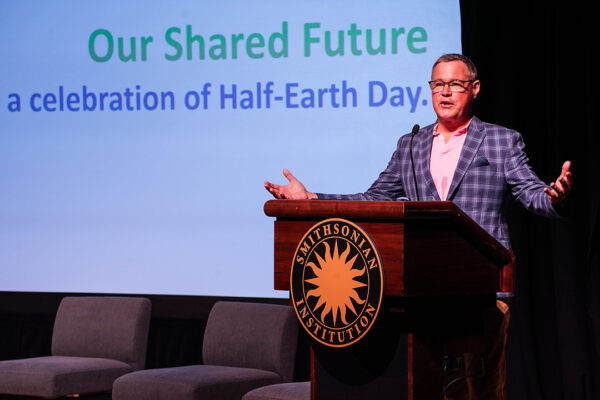

Jeff Corwin at Our Shared Future, a Celebration of Half-Earth Day 2022.
All of the proceedings from October 13th are now available to watch on the Half-Earth Day 2022 showcase. View the agenda and speaker bios from Our Shared Future.
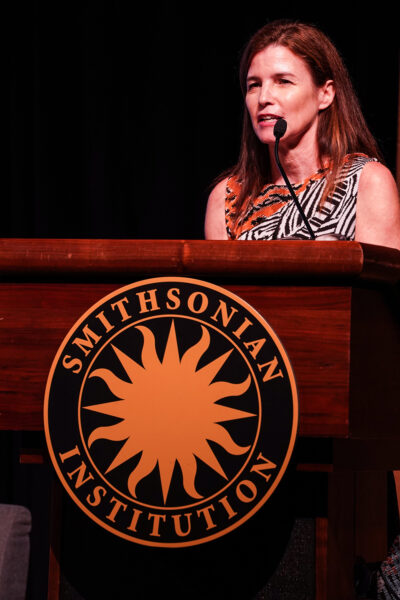

Paula J. Ehrlich at Our Shared Future, a Celebration of Half-Earth Day 2022.
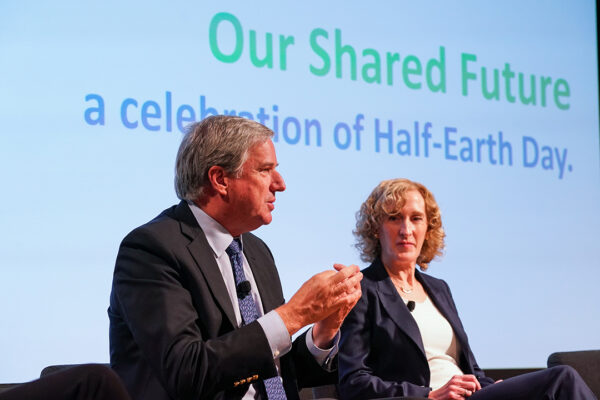

Cristián Samper and Elizabeth Gray at Our Shared Future, a Celebration of Half-Earth Day 2022.
The Chieftess of the Gullah/Geechee Nation, Queen Quet, shared an art-ivist performance presentation during a session aimed at exploring and sharing local solutions to the biodiversity crisis that tap community insights sponsored by Burt’s Bees. “I pray that the energy of the Gullah/Geechee family will continue to ripple around the world, so the people will know of the things we are doing to green the Gullah/Geechee communities…that they will know about our South Atlantic Salt Marsh Initiative to protect and preserve 1 million acres of salt marsh, because where else are we going to get our blue crabs.”
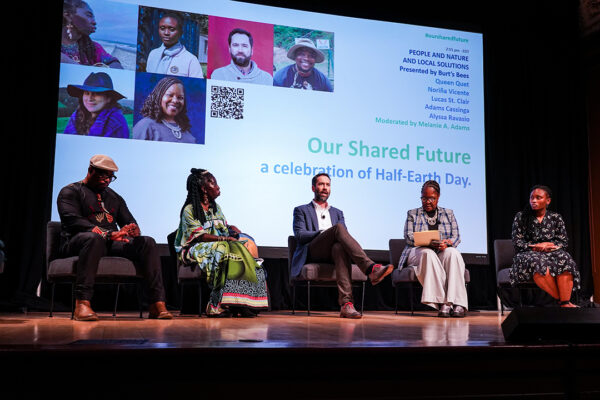

(l-r) Adams Cassinga, Queen Quet, Lucas St. Clair, Melanie A. Adams, Noriña Vicente at Our Shared Future, A Celebration of Half-Earth Day 2022.
“Outdoor recreation has a huge role to play to getting us to Half-Earth and helping us take care of Half-Earth once we get there,” said Alyssa Ravasio, CEO, Hipcamp.
Lucas St. Clair, President of the Elliotsville Foundation and instrumental to the creation of the Katahdin Woods and Waters National Monument shared, “We created a platform for the native community, to tell their story…but we came to this moment where we had to figure out a way to protect…this cultural intellectual property. The tribes own their stories. We can’t take their stories.”
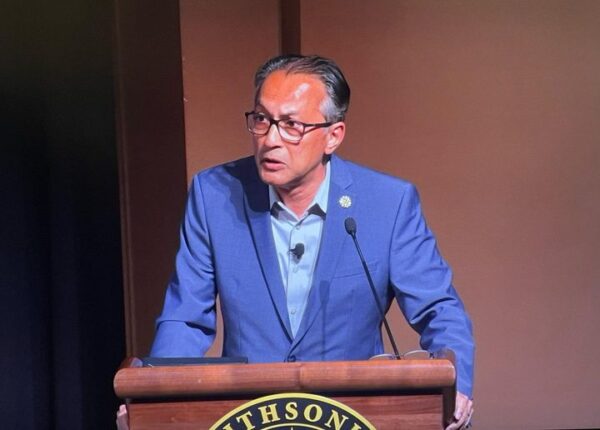

Ani Dasgupta gives the James M. and Catherine D. Stone Foundation Distinguished Lectureship in Biodiversity keynote at Our Shared Future, a Celebration of Half-Earth Day 2022.
In the closing event keynote, “Bringing Climate, Nature and People Together”, Ani Dasgupta, the President and CEO of World Resources Institute presented on the opportunity to leverage better economic policy, new nature finance solutions, and better scientific evidence to achieve positive outcomes for nature.
“The science of nature is getting better everyday and the connection to the economy (there are $44 trillion dollars associated with natural systems) are getting better too,” shared Dasgupta during the James M. and Cathleen D. Stone Foundation Distinguished Lectureship in Biodiversity.
Our Shared Future also featured a tribute to the late E.O. Wilson (1929-2021). E.O. Wilson participated in all 5 of the last Half-Earth Days and made his last lecture on Half-Earth Day 2021 last October.
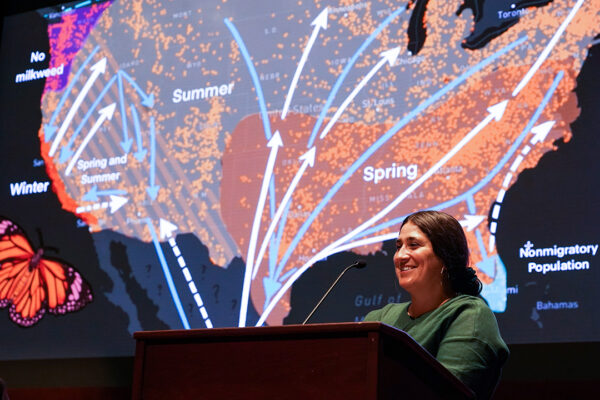

Alyssa Ravasio, CEO, Hipcamp at Saving America’s Biodiversity: Wildlife Corridor Protection, Partnerships and Strategies, with Queen Quet, Chieftess of the Gullah/Geechee Nation.
On October 12th, Saving America’s Biodiversity: Wildlife Corridor Protection, Partnerships and Strategies with Queen Quet, Chieftess of the Gullah/Geechee Nation, a companion Half-Earth Day 2022 briefing was held at the U.S. Capitol. The briefing was sponsored by Rep. Don Beyer (D-VA) and Sen. Ben Ray Luján in partnership with the Wildlands Network, E.O. Wilson Biodiversity Foundation, ARC Solutions, Endangered Species Coalition, International Fund for Animal Welfare, and The Wilderness Society. Saving America’s Biodiversity also brought together scientists, and influential conservationists to discuss the challenges and opportunities to protect biodiversity, especially the role of wildlife corridors in US policy like the ‘America the Beautiful’ initiative.
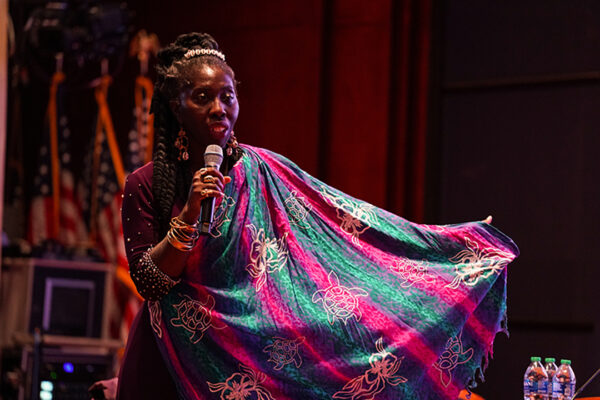

Queen Quet, Chieftess of the Gullah/Geechee Nation at Saving America’s Biodiversity: Wildlife Corridor Protection, Partnerships and Strategies.
All of the proceedings from October 12th are now available to watch on the Saving America’s Biodiversity showcase. View the agenda and speaker bios for Saving America’s Biodiversity.
“Science tells us that human ecology is driving mass extinction, the first one driven entirely by another species, us. And we’ve known this for a good long while,” said Dan Ashe, President and CEO of Association of Zoos and Aquariums.”
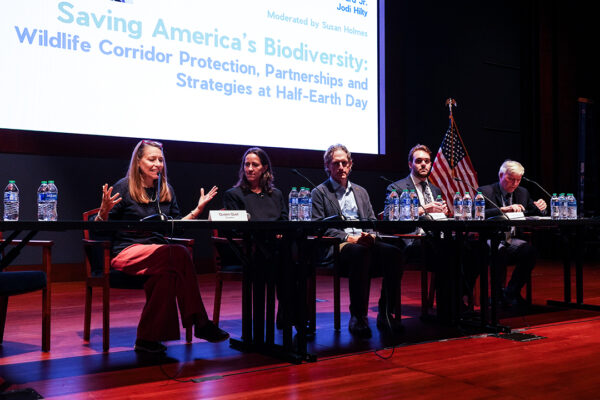

(l-r) Susan Holmes, Jodi Hilty, Carlton Ward Jr., Conor Vargo at Saving America’s Biodiversity: Wildlife Corridor Protection, Partnerships and Strategies, with Queen Quet, Chieftess of the Gullah/Geechee Nation.
Susan Holmes, Federal Policy Director at the Wildlands Network moderated the event and shared that Congress has passed legislation dedicated $350 million to wildlife crossings and comprehensive legislation has passed the House twice, and 14 states have passed wildlife corridor bills, but there is still much work to do.
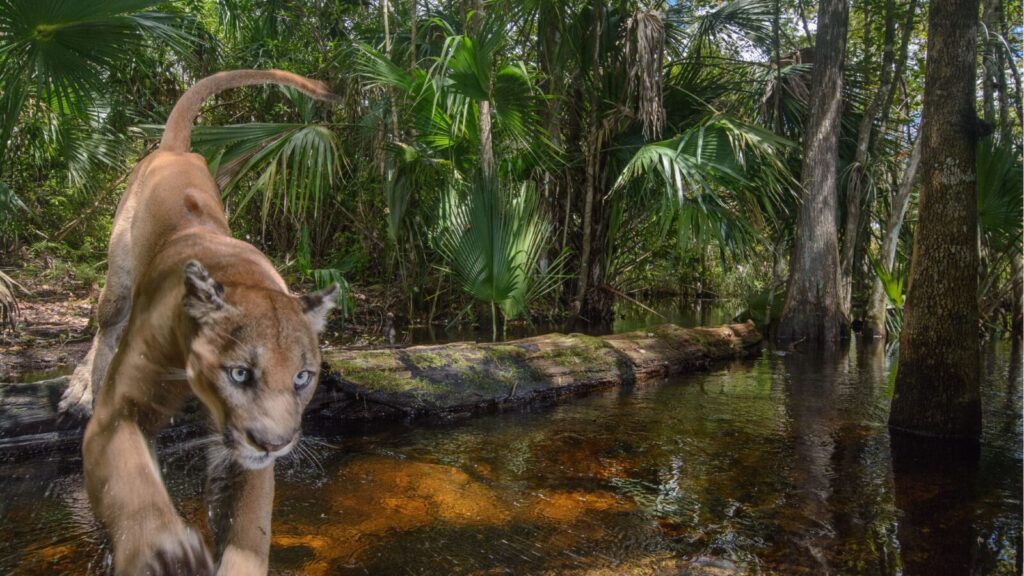

Florida panther in South Florida swamp. Photo by Carlton Ward Jr. ⓒ
Carlton Ward Jr., National Geographic Explorer and founder, WildPath, shared this about the Florida panther being an ambassador for wildlife connectivity, “Florida has an amazing network of protected lands, but we also have a thousand people a day moving to Florida…The Florida panther is an emblem for this corridor and there is no recovery for the Florida panther without access to more of its historic territory.”
The E.O. Wilson Biodiversity Foundation also announced a major update to the Half-Earth Project Map as part of the celebration. New tools and features on the map show patterns of biodiversity, human impacts, and protected areas to reveal conservation opportunities.
“This is reimagining the way species conservation is done. Finding opportunities where we can partner with other global efforts will improve our ability to protect species now and combat climate change which threatens the quality of habitat,” said Walter Jetz, Scientific Chair of the E.O. Wilson Biodiversity Foundation, and professor of ecology and evolutionary biology and of the environment at Yale University.
Additional updated features to the map incorporate improved resolution of biodiversity layers, an irrecoverable carbon layer, added marine data, and new personalization tools, including translations into Spanish and Portuguese.
View all the proceedings from Our Shared Future, a Celebration of Half-Earth Day at https://vimeo.com/showcase/9915644
View all the proceedings from Saving America’s Biodiversity: Wildlife Corridor Protection, Partnerships and Strategies at https://vimeo.com/showcase/9919639

